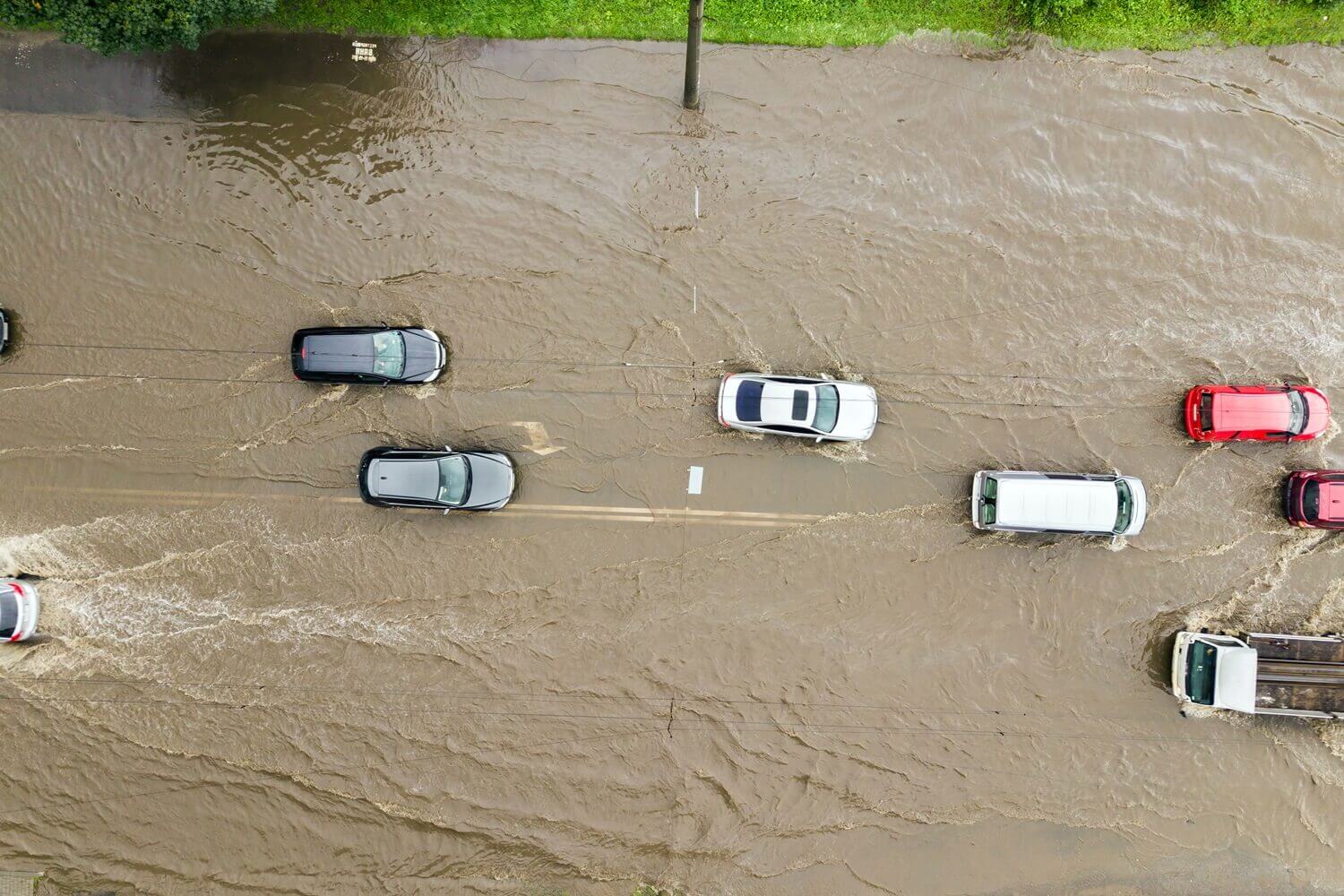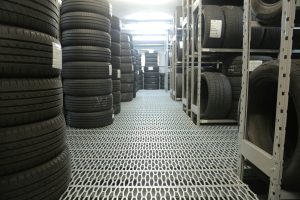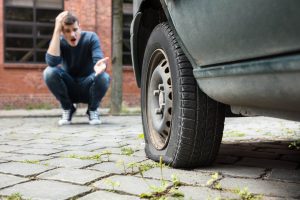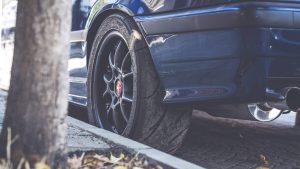The frequent heavy rain and floods in Malaysia make the roads hazardous for drivers. Driving through floodwaters is not only challenging but can also harm the vehicle, especially the tires and braking system.
Therefore, checking and maintaining the tires and brakes before and after driving through floods is crucial to ensure vehicle safety and performance.
This article will discuss the importance of tire and brake inspection in flood and heavy rain situations.
Importance of Tire and Brake Inspection Before Driving
1. Tires
Before driving, especially in adverse weather like heavy rain, it’s important to ensure the car tires are in good condition. Worn or damaged tires will reduce the vehicle’s performance and make it less effective on slippery roads.
One key factor to check is the tire tread. Sufficient tread will help improve grip on wet roads and reduce the risk of hydroplaning, which occurs when the tire loses traction due to standing water on the road. As a guideline, car tires should have a tread depth of at least 1.6mm for optimal performance in heavy rain.
Additionally, tire pressure should be checked. Proper tire pressure helps the tires function efficiently and enhances driving safety. Ensure that the tire pressure matches the manufacturer’s specifications to maintain tire safety.
2. Brakes
The brake system is a crucial component to inspect before driving in flood or heavy rain conditions. Inefficient brakes can make it difficult to stop the vehicle accurately, especially on wet and slippery roads. Initial checks should include ensuring sufficient brake fluid levels and confirming there are no leaks or other issues with the brake system.
Steps When Driving Through Floods
1. Drive at Low Speed
When driving through floodwaters, ensure the vehicle speed is reduced. Driving too fast can cause the tires to lose grip and make the vehicle slip. By driving slowly, the tires will have more time to make contact with the road, helping to prevent a loss of control.
2. Avoid Sudden Braking
Sudden braking in floodwaters can cause tires to slip or the vehicle to lose control. Instead, drivers are advised to brake gently and consistently to prevent brake inefficiency from water entering the brake system. Avoiding this situation will help maintain tire safety and ensure good brake performance.
3. Tire Grip
When driving on floodwater-covered roads, ensure that tire grip is maintained. This can be done by avoiding sudden lane changes and steering clear of areas with standing water. Standing water can cause the tires to lose grip and increase the risk of accidents.
Tire and Brake Checks After Driving Through Floods
1. Tires
After driving through floodwaters, it’s important to check the tires again to ensure no damage has occurred due to water. Floodwater containing sand or small rocks can damage the tires. Look for any cracks or tears on the tires after driving through water.
Additionally, check the tire pressure again to ensure there are no significant changes. Damaged tires or tires with insufficient pressure will reduce driving safety in the future.
2. Brakes
The brake system should be tested and inspected after driving through floodwaters. Water entering the brake system can cause the brakes to malfunction. As an initial step, drivers can brake several times over short distances to dry the brake discs and ensure the system is functioning properly. If the brakes are still ineffective or there are unusual noises, immediately take the vehicle to a workshop for further inspection.
Additionally, check the brake fluid level and ensure there are no leaks. Brake fluid leaks or loss can affect the brake system’s effectiveness and make the vehicle harder to control.
Preventive Measures and Regular Maintenance
1. Regular Tire Inspections
Regular tire inspections are important to ensure driving safety in all conditions, especially during heavy rain and floods. Drivers are advised to conduct consistent tire checks to monitor tread condition, tire pressure, and other potential damage. Tayaria offers regular tire inspection services to keep your tires in top condition and ready to handle adverse weather.
2. Brake Maintenance
In addition to tires, regular brake maintenance is also essential. A well-functioning brake system helps prevent accidents and ensures the vehicle can be stopped safely in emergencies. Don’t ignore early signs like unusual noises, vibrations in the brake pedal, or reduced braking effectiveness.
Conclusion
Driving through floods and heavy rain requires extra preparation and attention to tires and brake systems. Pre- and post-drive inspections are vital to ensure personal and vehicle safety.
Damaged tires and inefficient brakes can increase the risk of accidents. Therefore, to ensure your safety, make sure your tires and brakes are always in good condition.
Do not neglect the need for regular tire inspections. Make an appointment at the nearest Tayaria car shop for tire maintenance and ensure your vehicle stays safe on the road, especially in unpredictable weather.





